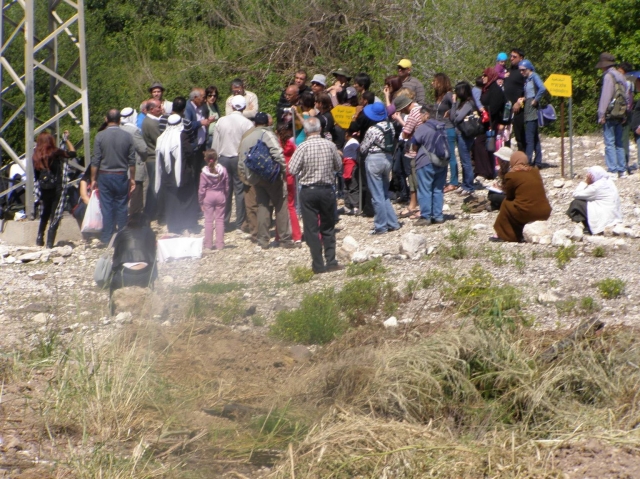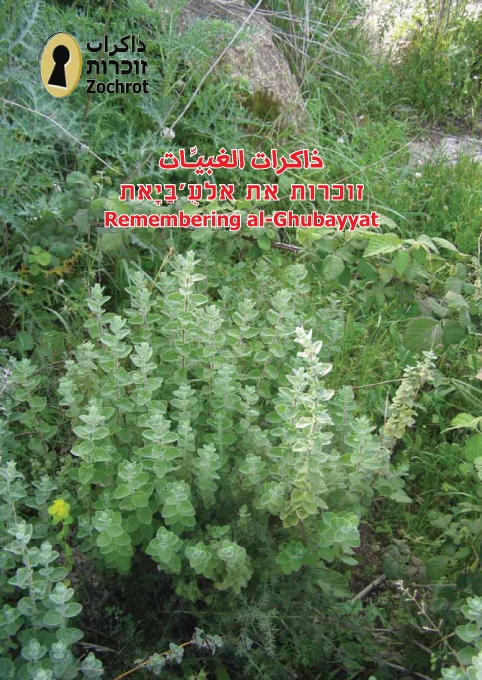Info
District: Haifa
Occupation date: 13/04/1948
Jewish settlements on village/town land before 1948: None
Jewish settlements on village/town land after 1948: None
Background:
Al-Naghnaghiyya Before 1948
Located at 28.5 km distance from Haifa, the village was the smallest of a group of three (known collectively as al-Ghubayyat) which were located on the eastern slopes of the bilad alrawha'; the other two villages were al-Ghubayya al-Fawqa and al-Ghubayya al-Tahta. It lay on the northern edge of a hill at the edge of a wadi bed, and overlooked the plain of Marj ibn 'Amir and the Nazareth hills to the north and northeast. It was adjacent to the Haifa-Jinin highway.
Al-Naghnaghiyya's population was Muslim, and the village houses, scattered over the slopes, were made of stone and mud, stone and cement, or concrete. The three villages shared an elementary school that was built around 1888 during Ottoman rule, but it was closed during the Mandate. They had access to a number of water sources including wadis, springs, and the al-Muqatta' River. Their economies were based on agriculture and animal husbandry, grain being the chief crop. A small area to the north of al-Naghnaghiyya was planted with fruit trees. Next to the village there was an artificial mound that bore the same name. Two km southeast, on the highway to Jinin, lay Tall al-Mutasallim, identified with Megiddo.
Occupation, Depopulation, and Israeli Settlements
According to a New York Times dispatch, the village was occupied on 9 April 1948, when units of the Haganah broke a two-day truce in the battle for the settlement of Mishmar ha-'Emeq. However, Israeli historian Benny Morris states that al-Naghnaghiyya was not occupied until the night of 12-13 April. Like all villages captured in this operation, it was completely destroyed over the following days. It is not certain what happened to the residents; they either fled during the attack or were expelled upon occupation, as occurred at nearby villages.
According to historian Ilan Pappe, al-Naghnaghiyya was ethnically cleansed during the same operation which destroyed other large villages like Abu Shusha, Abu Zurayq, and al-Mansi: the roads east to Jinin soon filled with thousands of Palestinians whom the Jewish troops had expelled and sent walking, not far from where the bastion of Zionist socialism had its kibbutzim.
There are no Israeli settlements on village lands. Mishmar ha-'Emeq, built in 1926, and Midrakh 'Oz, built in 1952, are the closest settlements.
The Village Today
The remains of houses are scattered on the slope of one hill. The site, traversed by the Haifa-Megiddo highway and partly occupied by an Israeli soccer field, is difficult to identify.
-----------------------
Sources:
al-Khalidi, Walid (ed.). All that remains: the Palestinian villages occupied and depopulated by Israel in 1948. Washington DC: 1992.
Pappe, Ilan. The Ethnic Cleansing of Palestine. Oxford: 2006.




